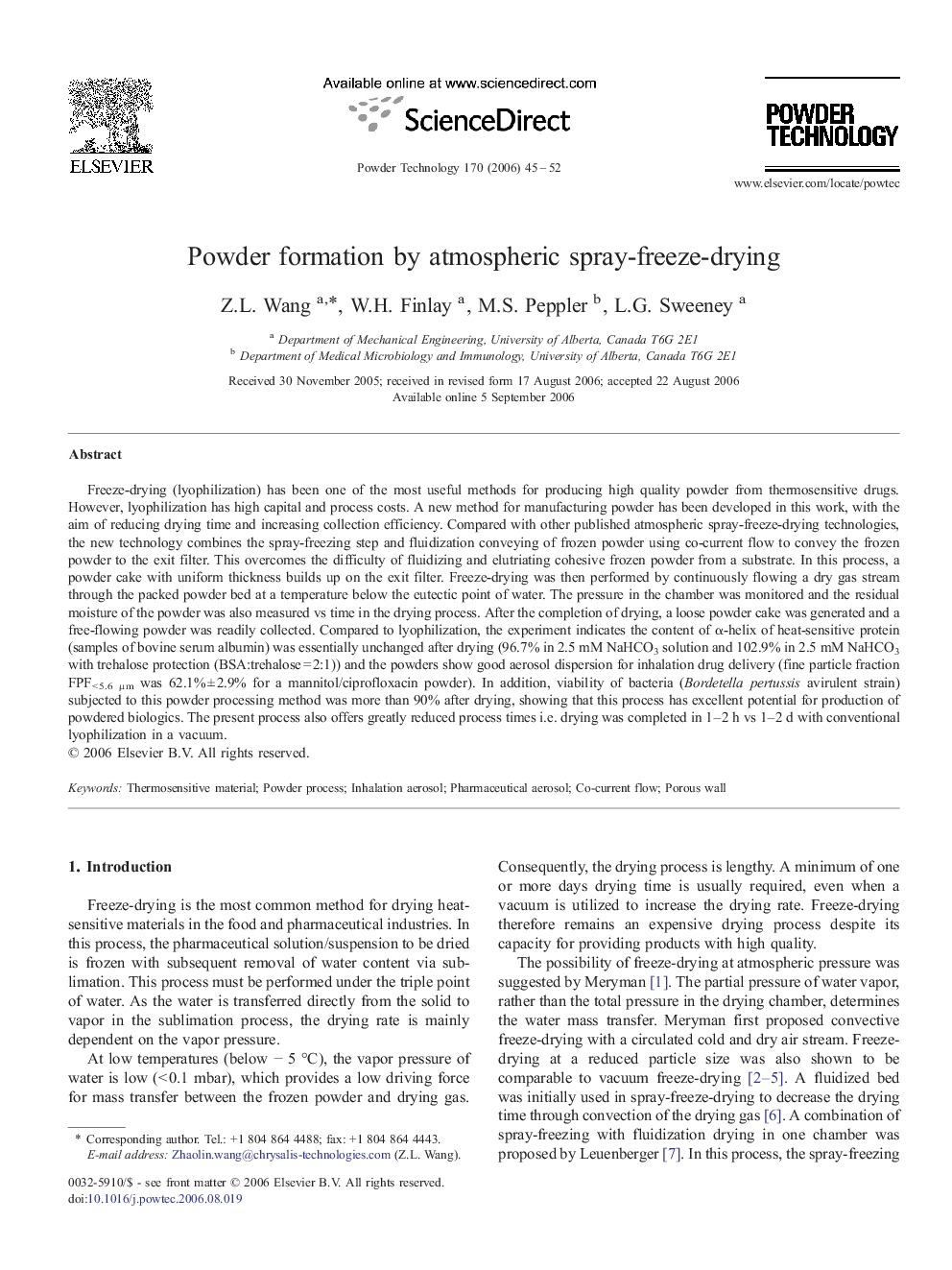| کد مقاله | کد نشریه | سال انتشار | مقاله انگلیسی | نسخه تمام متن |
|---|---|---|---|---|
| 239363 | 465820 | 2006 | 8 صفحه PDF | دانلود رایگان |

Freeze-drying (lyophilization) has been one of the most useful methods for producing high quality powder from thermosensitive drugs. However, lyophilization has high capital and process costs. A new method for manufacturing powder has been developed in this work, with the aim of reducing drying time and increasing collection efficiency. Compared with other published atmospheric spray-freeze-drying technologies, the new technology combines the spray-freezing step and fluidization conveying of frozen powder using co-current flow to convey the frozen powder to the exit filter. This overcomes the difficulty of fluidizing and elutriating cohesive frozen powder from a substrate. In this process, a powder cake with uniform thickness builds up on the exit filter. Freeze-drying was then performed by continuously flowing a dry gas stream through the packed powder bed at a temperature below the eutectic point of water. The pressure in the chamber was monitored and the residual moisture of the powder was also measured vs time in the drying process. After the completion of drying, a loose powder cake was generated and a free-flowing powder was readily collected. Compared to lyophilization, the experiment indicates the content of α-helix of heat-sensitive protein (samples of bovine serum albumin) was essentially unchanged after drying (96.7% in 2.5 mM NaHCO3 solution and 102.9% in 2.5 mM NaHCO3 with trehalose protection (BSA:trehalose = 2:1)) and the powders show good aerosol dispersion for inhalation drug delivery (fine particle fraction FPF< 5.6 μm was 62.1% ± 2.9% for a mannitol/ciprofloxacin powder). In addition, viability of bacteria (Bordetella pertussis avirulent strain) subjected to this powder processing method was more than 90% after drying, showing that this process has excellent potential for production of powdered biologics. The present process also offers greatly reduced process times i.e. drying was completed in 1–2 h vs 1–2 d with conventional lyophilization in a vacuum.
Journal: Powder Technology - Volume 170, Issue 1, 30 November 2006, Pages 45–52